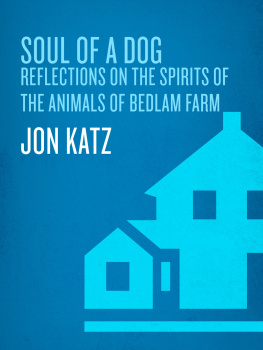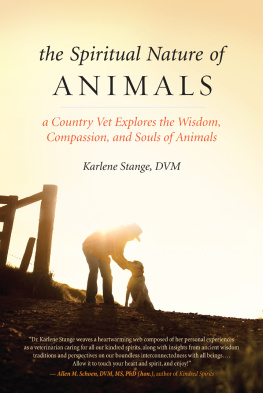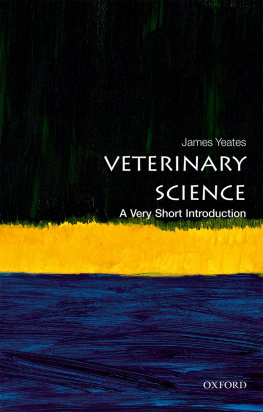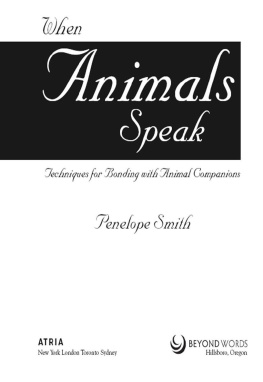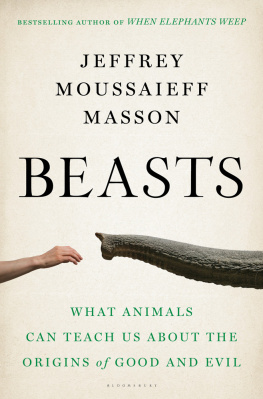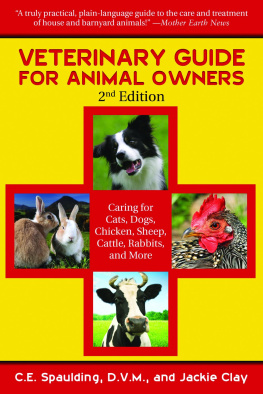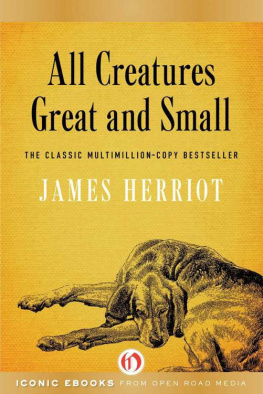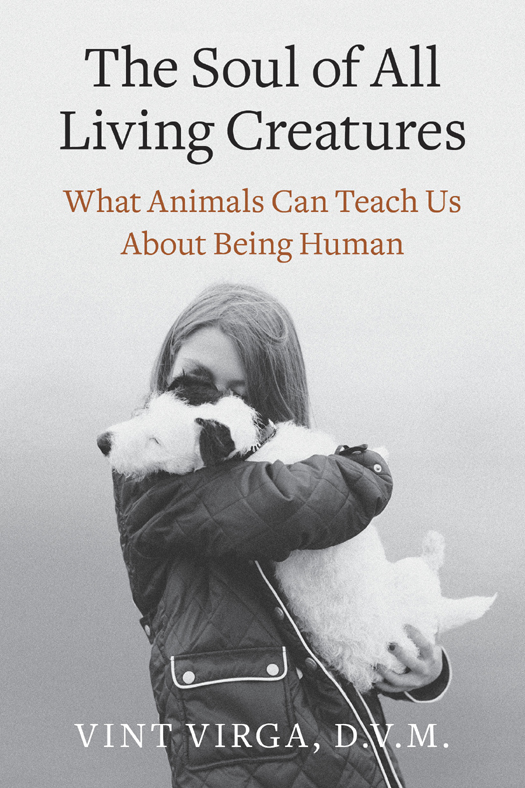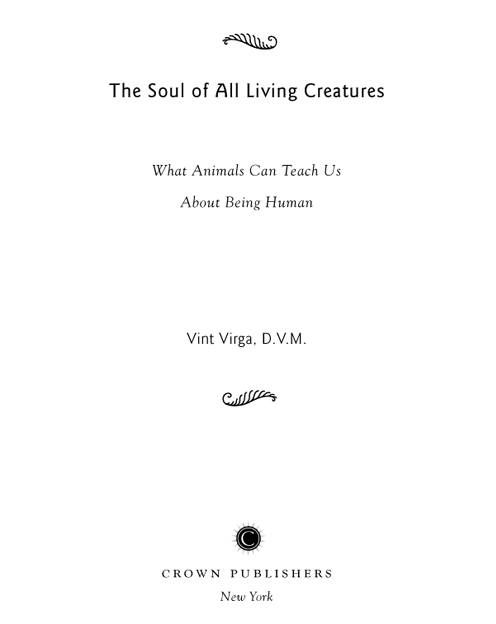
To inquire about booking this author for a speaking engagement, please contact the Penguin Random House Speakers Bureau at .
Copyright 2013 by Vint Virga
All rights reserved.
Published in the United States by Crown Publishers, an imprint of the Crown Publishing Group, a division of Random House, Inc., New York.
www.crownpublishing.com
CROWN and the Crown colophon are registered trademarks of Random House, Inc.
Library of Congress Cataloging-in-Publication Data
Virga, Vint.
The soul of all living creatures/Vint Virga, D.V.M.First edition.
Pages cm
Includes bibliographical references.
1. Virga, Vint. 2. VeterinariansBiography. 3. Veterinary medicine. 4. Human-animal relationships. I. Title.
SF613.V57V57 2013
636.089092dc23
[B] 2012035166
eISBN: 978-0-307-71888-4
Jacket design by Eric White
Jacket photography: Anton Renborg/Gallery Stock
v3.1_r2
For Babe
and that day in the Japanese garden.
For Gigi,
to the edge of the universe and back.
The soul is the same in all living creatures,
although the body of each is different.
Hippocrates
Contents
Authors Note
The stories I tell in these pages are true. A few of those mentioned have permitted me to use their real names. In all other narratives, the names and identifying details of those whom I write aboutpeople as well as animalshave been changed in order to protect their privacy and maintain confidentiality.
Throughout the book I refer with intention to individual animals as he or she instead of it, which is customary in our culture. The use of it when referring to animals draws a distinction between them and us and reinforces viewing them as objects rather than fellow beings. It is clear from all I have written here I believe passionately that all living creatures, animals and humans, are unique and individual beings. I leave it to the reader to decide for themselves, after reading these pages, which they feel is more appropriate.
Introduction

Lots of people talk to animals. Not very many listen, though. Thats the problem.
Benjamin Hoff, The Tao of Pooh
I had done all that I could for him. Pongo lay on his side in the run, a stack of threadbare blankets beneath him and jugs of warm water swaddled at his sides. For close to an hour Id been struggling to get him stabilized, since that moment Id first caught sight of him as he was carried through the treatment room door. Even when I was tugged away to attend to the stream of other patients whod gathered that night just inside our doorsa stoic coonhound Id seen before whod stubbornly tangled with his seventh porcupine, a threesome of cats whod delightedly grazed on the childrens collection of Halloween chocolates, a raccoon with a snotty nose and runny eyes I feared foretold of distemper, a Newfoundland puppy whose paw had been stepped on, a robin stunned from flying headlong into a plate-glass window, and the others taking refuge on that bitter, stormy November nightmy thoughts still drifted back to Pongo.
Hed arrived at the height of the first wave of patients as the techs triaged each animal amidst a flurry of phone calls, frantic clients, and paperwork. Whisking past the blur of faces lined up against the waiting room walls, Pongos owners, Claire and Turner Wallacea graying professor and his stately wife decked out in their finest clothes for a night on the townhad shunned the gurney the techs rolled to their car. Instead, cradling the whole of his body in a makeshift sling formed by their arms, they maneuvered Pongo through the short maze of hallways leading from reception back to the clinics treatment room, the hub behind the scenes where we did our most intensive work. Huddled arm in arm together in a growing puddle from their rain-soaked clothes, they stood behind me watching over my shoulder as I tended to their beloved dog.
Ready at hand on every wall surrounding us, tucked into cabinets and tightly packed on rows of shelves, stood most every foreseeable supply, device, and piece of equipment needed to care for our patients each night: sutures, bandages, catheters, needles, boxes of color-coded syringes, sterile packs of surgical tools, a curious array of oddly shaped instruments uniquely fashioned for animals bodies, rows and rows of medicine bottles holding powders, injections, and pillsa state-of-the-art formulary of drugs designed to treat whatever ails the body. Within view on either side of us, the surgery suite and a row of runs stood at the ready whenever they were needed. And sprawled on his side before me lay my patient.
Pongo, a two-year-old flat-coated retriever, was the first hit-by-car victim of the night after dashing toward a poodle in a pickup passing by his home. His long black hair, tangled in mats from being thrust and dragged against the pavement, effused an odor of rain, oil, and asphalt. Yet, other than a few contusions and abrasions, Id failed to find any signs of trauma. His lab work and X-rays were likewise unremarkable. At eighty-five pounds, his barrel chest and solid frame had served him well.
But despite these minor injuries, Pongos body betrayed it was in crisis. Through the ear tips of my stethoscope, I listened to his heartbeat pound while my fingers searched for a matching pulse. Yet, running my hands along his veins, I could barely feel the faintest flutter. His pupils gazed beyond me unfocused. His shivering skin felt icy cold. In response to a moments pressure from my thumb, his dry, ashen gums blushed a gloomy gray-pink. Pongo was in progressive shock, if from nothing more than the sheer concussion of his impact with the speeding truck.
As a doctor in the emergency room seasoned by four grueling years of practice, I had grown to trust my knowledge and skills. Eight years earlier, as a freshman in vet schoolwell before my first hospital roundsI had learned that animals dont walk on their X-rays, a maxim repeated by our professors to stress the limits of diagnostic tests. As I write these words now, thirty years later, that lesson has borne out time and again. Above all the tests we may run as doctorsultrasounds, blood work, or MRIswe must trust in our sense of touch, eyes, ears, and instincts.
As I stood next to Pongo, weighing our findings, the results of our tests suggested he should be fine. Yet, in spite of my searching, something was missinga piece of the puzzle, a hidden clueand I was at a loss to find it. I knew that the best I could do for my patient was simply to step back and give him some time. Time to respond to the meds for shock. To the steady flow of sustaining fluids dripping through the IV line. To the soothing warmth of a quiet bed waiting for him in a nearby run.
Turning to Dr. and Mrs. Wallace before I stepped away from Pongos side, I saw in their faces not only their angst but also their bleary-eyed looks of exhaustion. Facing Pongos mortality had clearly taken its toll on them.
So, promising to keep in touch with any changes in his condition, I nudged them home for a bit of rest. And leaving Pongo in the care of Melissa, our more-than-capable treatment room tech, I left to begin removing the quills from my old familiar coonhound friend.


